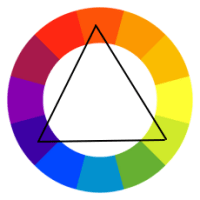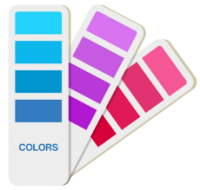#CA7FDB HEX Color Code - Orchid
RGB Percentages #CA7FDB
#CA7FDB Hex Color Code name is Orchid. #CA7FDB HEX Code RGB percentage is 79% Red, 49% Green and 85% Blue. #CA7FDB Hex Code RYB Percentage is 79.22% Red, 49.8% Yellow, 85.88% Blue. CMYK Color Model of #CA7FDB is 8% Cyan, 42% Magenta, 0% Yellow, 14% Black. HSL (Hue, Saturation, and Lightness) Color Modal of #CA7FDB is hsl(289, 56%, 68%) and HSLA (Hue Saturation Lightness Alpha) of #CA7FDB is hsl(289, 56%, 68%, 1.0) and HSV (Hue, Saturation, Value) is hsv(289, 42, 86). A Three-Dimensional XYZ value of #CA7FDB is 44.73, 32.85, 70.99.
Hex8 Value of #CA7FDB is #CA7FDBFF. Decimal of #CA7FDB is 13271003, Octal of #CA7FDB is 62477733 and Binary of #CA7FDB is 11001010, 1111111, 11011011 and Android of #CA7FDB is 4291461083 / 0xffca7fdb. The CIE xyY Color Space of #CA7FDB is 0.301, 0.221, 0.221 and YIQ Color Space of #CA7FDB is 159.913, 15.1329, 44.4929. The Color Space LMS (Long Medium Short) of #CA7FDB is 35.36, 24.72, 70.39. CieLAB (L*a*b*) of #CA7FDB is 64.04, 43.92, -35.43. CieLUV:LCHuv (L*, u*, v*) of #CA7FDB is 64.04, 33.78, -61.93. The cylindrical version of CieLUV (CieLCH : LCHab) of #CA7FDB is 64.04, 56.43, 321.11. #CA7FDB. Hunter Lab variable is 57.31, 39.0, -33.32. #CA7FDB Tints reaching to #FFFFFF (White) is #CA7FDB, #CF8BDE, #D497E1, #D9A3E4, #DEAFE7, #E3BBEA, #E8C7ED, #EDD3F0, #F2DFF3, #F7EBF6, #FFFFFF. Shades of #CA7FDB going down to #000000 are #CA7FDB, #B673C6, #A267B1, #8E5B9C, #7A4F87, #664372, #52375D, #3E2B48, #2A1F33, #16131E, #000000.
#CA7FDB can be used as Background Color. #CA7FDB can be used as Foreground Color or Text Color. #CA7FDB can be used as Text Shadow as well.
RYB Percentages #CA7FDB
CMYK Percentage #CA7FDB
Different Opacity of Color #CA7FDB
#CA7FDB Coloured Mandala
#CA7FDB Random Generated Palette
#CA7FDB HEX Code Conversions
| RGB | rgb(202, 127, 219) |
| RGB Percent | 79%, 49%, 85% |
| RYB | 202.0, 127.0, 219.0 |
| CMYK | 8, 42, 0, 14 |
| HSV | hsv(289, 42, 86) |
| HSL | hsl(289, 56%, 68%) |
| HSLA | hsl(289, 56%, 68%, 1.0 |
| HSLuv : HUSL | 298.61, 63.47%, 64.04% |
| Android | 4291461083 / 0xffca7fdb |
| Binary Value | 11001010, 1111111, 11011011 |
| Decimal Value | 13271003 |
| Octal Value | 62477733 |
| Hunter Lab | 57.31, 39.0, -33.32 |
| Hex8 Value | #CA7FDBFF |
| XYZ | 44.73, 32.85, 70.99 |
| xyY | 0.301, 0.221, 0.221 |
| YIQ | 159.913, 15.1329, 44.4929 |
| LMS | 35.36, 24.72, 70.39 |
| YUV | 159.913, 29.09, 36.92 |
| YDbDr | 159.913, 88.89, -80.01 |
| YCbCr | 153.34, 157.29, 154.37 |
| YCoCg | 168.75, 210.5, -41.75 |
| YPbPr | 159.91, 33.34, 30.02 |
| CieLAB | 64.04, 43.92, -35.43 |
| CieLUV : LCHuv | 64.04, 33.78, -61.93 |
| CieLCH : LCHab | 64.04, 56.43, 321.11 |
#CA7FDB Hex Preview on Black Background
#CA7FDB Hex Preview on White Background
#CA7FDB Hex Color CSS Codes
#CA7FDB as Text Font Color
<p style="color:#CA7FDB">Text here</p>This sample text font color is #CA7FDB.
Laws control the lesser man...Right conduct controls the greater one. - Chinese Proverb
#CA7FDB as Background Color
<div style="background-color:#CA7FDB;">Text content here</div>This div background color is #CA7FDB
#CA7FDB as Border Color
<div style="border:3px solid #CA7FDB;">Text here</div>This div has border color is #CA7FDB.
Other #CA7FDB Css3 Examples
#CA7FDB Border around Text
<p style="text-shadow: -1px 0 #CA7FDB, 0 1px #CA7FDB,
1px 0 #CA7FDB, 0 -1px #CA7FDB;">Text here</p>
This text has #CA7FDB Border shadow.
#CA7FDB Text Shadow with Hex Values
<p style="text-shadow: 4px 4px 2px #CA7FDB">Text here</p>This text has shadow with #CA7FDB hex color code.
#CA7FDB Div Box Shadow
<div style="-moz-box-shadow: 1px 1px 3px 2px #CA7FDB;
-webkit-box-shadow: 1px 1px 3px 2px #CA7FDB;
box-shadow: 1px 1px 3px 2px #CA7FDB;">Text here</div>
This div has shadow of color #CA7FDB
Color Harmonies

COMPLEMENTARY COLORS
Complementary Colors are the exact opposite of each other in such a way they cancel each other out in black, white or grey color. They are also called "Opposite Colors". Complementary colors are maninly used in logos and retail display. When placed next to one another, they make each other appear brighter and thus create focus.
ANALOGOUS COLORS
Analogous Colors are referred to a group on colors that exists close on a color wheel. Analogous Colors mainly appear in nature as you see different shades and spectrum of one color. Suppose during monsoon season, you will see a gradient of green color on trees.
TRIADIC COLORS
Triadic colors as the name suggests is a pair of three colors equidistant from each other on the Color Wheel. They are generally fun paired and sparks bright and happy combinations. They are mainly used in Interior Designing.

TETRADIC COLORS
Tetradic colors refers to a color scheme of 4 colors equidistant from each other on Color Wheel. All 4 colors are selected evenly so there is no clear dominance of one color. Tetradic (double complementary) Color Scheme is always vibrant and colorful.
Color Shades, Tints and Tone
Color shades, tints and tones are made by mixing colors with black, white or gray. When added with these neutral colors, they have different variations which are used in backgrounds. Combining colors generate a whole range of color schemes that are useful and pleasing to the eye.

COLOR SHADES
Color Shades are created by adding black to a color which gradually darkens the shade but hue remains the same. Color Shades are mainly used in search section or footer backgrounds. Color Shades are also used in cosmetics and beauty products.
COLOR TONES
Color Tones are created by mixing gray (equal amount of white and black) to a color. Adding gray to a color, dulls its brightness, so it's added carefully. It results in endless variety of color useful for typographic elements and Geo colors in Maps.
COLOR TINTS
Color tints are created by hue or mixing white color to a pure color. Tinted Colors are paler than their original colors like pastel colors are a perfect example. Tinted Colors are used in backgrounds.

NEUTRAL COLORS
Neutral Colors are hues that appear to be without colors. They are used to compliment primary colors, and you won't find them on a Color Wheel. The four most common Neutral Colors are Black, White, Brown and Grey where Black is the strongest of neutrals. Neutral Colors are used in homes and office spaces as they are easy to blend and easy on the eye.
